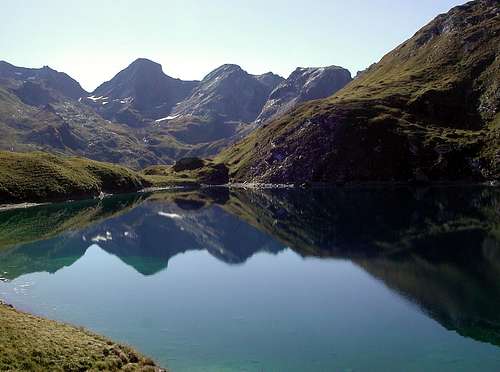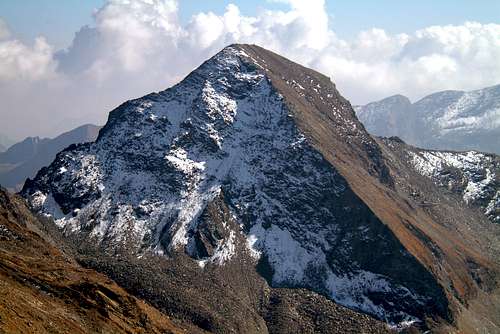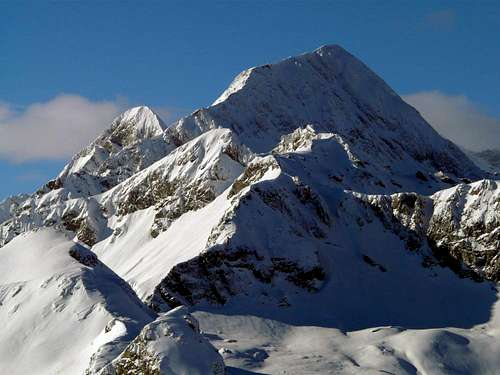-
 6237 Hits
6237 Hits
-
 84.82% Score
84.82% Score
-
 19 Votes
19 Votes
|
|
Mountain/Rock |
|---|---|
|
|
45.62440°N / 7.53010°E |
|
|
Mountaineering |
|
|
10299 ft / 3139 m |
|
|
Overview

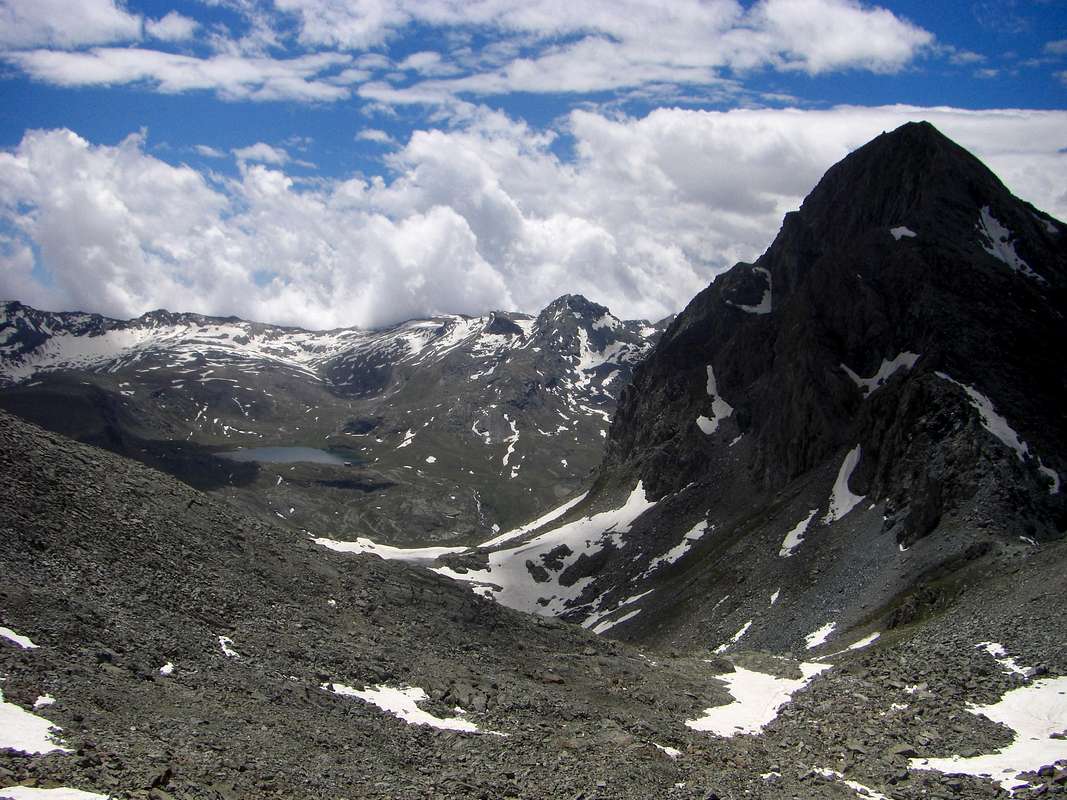
First Ascent
- First on the summit from Fussi Pass?: Abbot Pierre Chanoux, (1848).
- In winter: Unknown.
- S-SW Slope: Engineer Paganini?
- S Arête: Abbot Champorcher Filiberto Noussan, (1918).
- S-SE Wall (direct line): Osvaldo Cardellina, solo, (Jun 24th, 2001), in ascent from Dondena Hamlet; in descent through Southwestern Crest and Southern Slope (or Normal Route from Dondena Hamlet) with Emilio Bertona and Gianfranco Vicentini to Dondena.
- W-SW Arête: Giovanni Bobba? From Moussaillon Hill?
- W-SW Face (Right Sector) and W-SW Ridge: Osvaldo Cardellina and Alessandro Cardellina (Nov 01th, 2011), in ascent from Grand'Alpe, Cuneux Pasture and Tramail of Cuneus; in descent with Southwestern (with Tête de Cuneux 3.006 meters) Crest to Moussaillon Pass, Egidio Borroz Rotary Club Bivouac, Grand'Alpe.
- NW Edge: Osvaldo Cardellina, lone (Aug 22th, 2006), in ascent from Grand'Alpe, Cuneux Pasture and Tramail of Cuneus; in descent with Southwestern Crest (bypassing Tête de Cuneux 3.006 meters) to Moussaillon Pass, Egidio Borroz Rotary Club Bivouac, Grand'Alpe.
- N Wall (Left or Eastern Sector): Andrea Bastrentaz and Paolo Zappa, (Jun 16th, 1986).
- N Wall (Right or Western Sector): Osvaldo Cardellina, lone, (Aug 01th, 2011), in ascent from Grand'Alpe, Cuneux Pasture and Cuneus Tramail; in descent through Northeastern Crest to Col Fussì and traverse to Mont Glacier through SW Slope or Normal Via.
- NE Arête (from Fussi Pass): unknown.
- E Face: Nicola Vigna, Achille Ambrogio Damiano Ratti e Giulio Toesca di Castellazzo (Aug 21th, 1900).
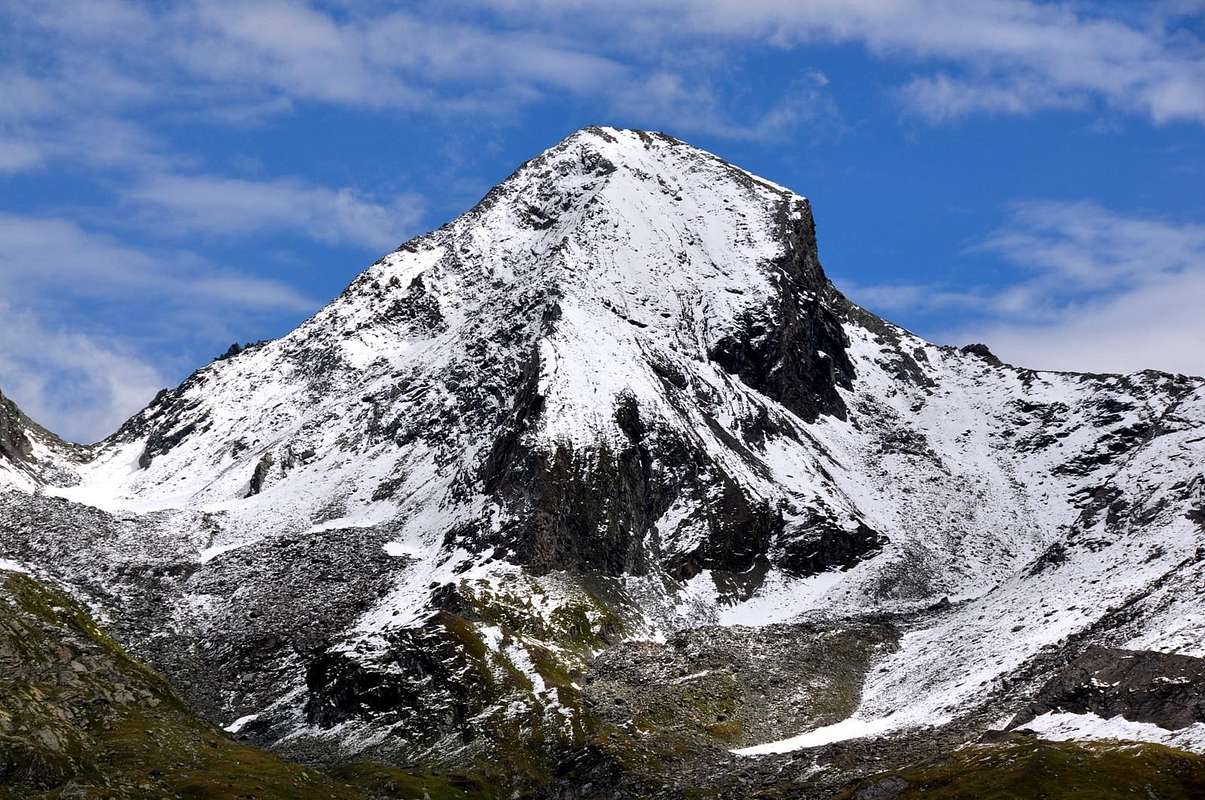
Getting There
BY CAR:- From Torino, Milano, etc: Motorway A5. Exit Pont Saint Martin for then to continue on SS.26 toward Hone Bard.
- From Switzerland: through the Grand Saint Bernard Tunnel or the namesake pass. Drive to Aosta, Verrès and Hone Bard..
- From France: through Mont Blanc Tunnel or Petit Saint Bernard Pass. It isn't necessary to take Motorway A5: you can drive on SS.26, in the direction of Aosta and Verrès and Hone Bard.
- Aeroporto "Corrado Gex" Saint Christophe (Aosta).
Road Itinerary & Approach
If you take the motorway, exit in Pont San Martin and follow the direction Aosta along the normal route; take care after Donnas: right side, immediately after the village, you can see approx. 100 meters of the Roman Consular Road and a nice arc. A few hundreds meters after the Bard Fortress there is a bridge left side, over the Dora Baltea River, with the indication Champorcher; follow it. Drive a few km, till the village of Chateau, and look right side for the indication Petit Mont Blanc. Follow this road, not too large, for a lot of km. Part is asphalted, the most part no. Usually the conditions of this second part are good, ask in the area. Follow this road (old Royal Road) till small Dondena Village. At the end a sign forbids the traffic after the parking; there are 3/4 parking area, but the road is steep and demaged; take care and park in the upper one. When you start walking, you will find a table with the indications, and the map of the area. Come down left till the river, pass over the bridge and along the road arrive to the Refuge of Dondena (2.200m).Route
From Dondena (2.110m) to follow the "Strada Reale" for the Window of Champorcher until the small bridge that go through the Torrent Ayasse. To continue long the path for the Pass of Moutsaillon (leaving to Northeast that for the "Mont Glacier"). To leave it to contribution 2.800m~ aiming directly on grassy slopes steep, to the terminal part of the Southwest first climbing about in the middle of the slope, under the small South Face, and then gradually bending to the left (Northwest) until you reach the base of the same altitude of 3.000 meters~. Leaving on the left the big jump of ~100 meters, it is estimated almost on its margin right through a small track and on steep, rotten and small rocks (I°; this stretch is not difficult but it is quite exposed and requires a bit of caution) to reach the real thread of the Southwest Ridge, where this is directed at an oblique angle to the East to about eighty meters from the Summit. Easily and quickly arrive with more linear path to the stone cairn of the Top (3h'00/3h'15). Note: not keep too right on the rocks of small South Face, because the same, that appear to "inviting", are made of cast somewhat fragile and dangerous, as well as covered with fine debris.
Da Dondena (2.110 m) seguire la Strada Reale per la Finestra di Champorcher sino al ponticello che attraversa il Torrente Ayasse. Proseguire lungo il sentiero per il Colle di Moutsaillon (abbandonando a Nordest quello per il Mont Glacier). Lasciarlo a quota 2.800 metri circa puntando direttamente su pendii erbosi ripidi, alla parte terminale della Cresta Sudovest; dapprima salendo circa al centro del pendio, sotto la Parete Sud, e poi piegando progressivamente verso sinistra (Nordovest) fino a raggiungere la base della medesima in altitudine di 3.000 metri~. Lasciando sulla sinistra il grande salto di 100 metri~, lo si aggira quasi sul suo margine destro tramite una piccola traccia e su roccette ripide e rotte (I°; questo tratto non é difficile ma risulta abbastanza esposto e richiede un poco di cautela) raggiungere il vero filo della Cresta sudovest, dove questa si indirizza in modo obliquo verso Est a circa una ottantina di metri dalla Sommità. Risalendo questo tratto terminale di cresta, pressocché camminabile, facilmente ed in breve tempo arrivare al grande ometto in pietra presso la Vetta (3h'00/3h'15). Nota: non tenersi troppo a destra sulle rocce della Faccia Sud, perché le stesse, che all'apparenza sembrano "invitanti", sono costituite da scagli alquanto fragili e pericolose, nonché ricoperte da fine detrito; per cui, avendo iniziato troppo verso il centro, conviene riportarsi quanto prima a sinistra cioé verso la suddetta descrizione.
Discesa: lungo la stessa via di salita.
Difficulty
This route can be considered E/EE/F+.Huts

Internet: Rifugio DONDENA Email: info@rifugidellarosa.it
Campings
Remember that free camping is forbidden (except for emergency reasons, over 2.500m, from darkness until dawn).Mountain Conditions
- You can get meteo information at the official site of the Regione Valle d'Aosta:
- Valle d'Aosta Meteo
Webcam
- WEBCAM on Aosta Valley:
- Webcam
Books and Maps
BOOKS:- "Guida delle Alpi Occidentali" di Giovanni Bobba e Luigi Vaccarone C.A.I. Sezione di Torino Volume II (parte II), 25 Maggio 1896.
- "Guida dei Monti d'Italia–Emilius Rosa dei Banchi Parco del Mont Avic" di Giulio Berutto e Lino Fornelli-Club Alpino Italiano/Touring Club Italiano, Marzo 2005 (in Italian).
- "I Rifugi della Valle d'Aosta" di Stefano Ardito, Ed. Guide iter, Febbraio 2003.
- "Guida della Regione Autonoma Valle d'Aosta" di Mario Aldrovandi; Ed. S.P.E. di Carlo Fanton, Torino 1964.
- "Diari Alpinistici" di Osvaldo Cardellina e Indice Generale accompagnato da Schedario Relazioni Ascensioni 1964-2019 (inediti).
MAPS:
- Enrico Editore Ivrea-Aosta "Gruppo del Gran Paradiso" 1:50.000.
- I.G.C. Istituto Geografico Centrale Torino "Ivrea Biella e Bassa Valle d’Aosta" (n° 9), 1:50.000.
- L'Escursionista "Valle di Cogne Carta dei Sentieri" 1:25.000.
Important Information
- REGIONE AUTONOMA VALLE D'AOSTA the official site.
- FONDAZIONE MONTAGNA SICURA Villa Cameron, località Villard de la Palud n° 1 Courmayeur (AO) Tel: 39 0165 897602 - Fax: 39 0165 897647.
- SOCIETA' GUIDE ALPINE DI COGNE Tel. 347/9473526 – 328/1373728.
- A.I.NE.VA. (Associazione Interregionale Neve e Valanghe).
Useful Numbers
- Protezione Civile Valdostana località Aeroporto n° 7/A Saint Christophe (Ao) Tel. 0165-238222.
- Bollettino Meteo (weather info) Tel. 0165-44113.
- Unità Operativa di Soccorso Sanitario Tel. 118.
Acknowledgements
I am greatly indebted to my friend "Osva" for the detailed description of the route, all texts and translation.


